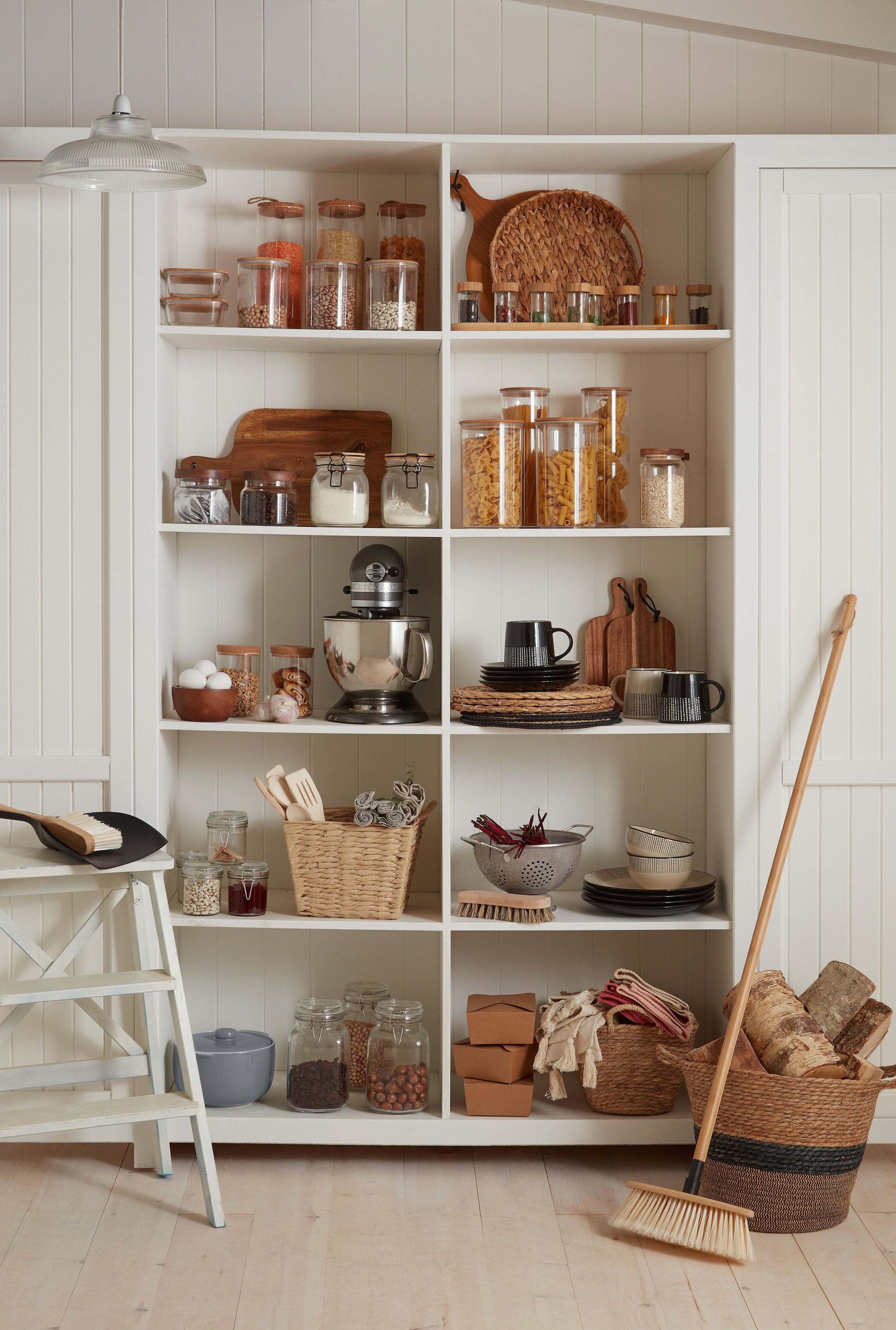Improving Your Home Interior: Is Clutter an Issue?
Pantry Simply Storage from B&M
Featured Partner Placement Post
The link between clutter and stress is well-established. The common phrase ‘tidy house, tidy mind’ rings true because if your home feels cluttered and out of control, it significantly adds to feelings of being overwhelmed and unorganised in all areas of your life. By tidying stray items away and categorising your home by keeping everything safely stowed in a known place, you can improve your mental well-being as well as the look of your interiors.
See-through boxes allow you to categorise clothing items and keep them tidy, while still being able to locate stored items quickly and easily. ORTHEX SmartStore Classic boxes via John Lewis & Partners.
Why should we keep an eye on clutter?
There’s a fine line between collecting one or two desirable items and starting to hoard without realising. You can still be a collector without becoming a hoarder - the most important step is keeping your belongings in order. Make sure that you have enough adequate storage and look to areas of your home where you could add more storage if required. For example, if you have high ceilings, install floating shelving high up on your walls to make the most of any dead surface space. Alcoves also provide a great designated recessed area to incorporate built-in cupboards or display shelving.
How often should you tidy clutter away?
In a recent survey by fitted furniture experts Hammonds, it was found that nearly a third of Brits clear out their homes at least once a month, mainly to reduce the amount of visual clutter in the household. Hammonds also found that people aged 65 or over are the least likely to clear out their homes at least once a week, while almost 1 in 4 aged between 25-34 clear their homes at least weekly. How often you need to clean your home will depend on your family lifestyle, along with how much clutter you tend to gather. Aim for at least monthly, if not more.
Acrylic make-up tidy trays via B&M
Clearing clutter: Where should I start?
Clutter tends to gather in those hard-working areas that we use every day: wardrobes, kitchen and bathroom cabinets, cupboard drawers, as well as the kitchen or coffee table tend to be the places where clutter gathers most. Start in one area of your home first and take it day by day so decluttering doesn’t become overwhelming.
These clear ORTHEX SmartStore Classic boxes are a great way to store away items that create clutter quickly, such as plugs, paperwork and stationery. From £7 via John Lewis & Partners.
To begin, take out or remove every item in one area and put it into a pile. After cleaning the cleared surface, consider what items to put back and what items to dispose of. In your ‘keep’ pile, look to see if you can categorise a selection of items and invest in appropriate storage boxes and containers which will keep everything neat and tidy going forward. Clear storage boxes allow you to see everything inside without you having to pull apart all of your hard work trying to find a particular item; while baskets, hangers, racks and wall hooks should be utilised to arrange all of your belongings.
Stop open packets of food items spilling out in your kitchen cupboards. These Acacia Wood Lidded Glass Storage Jars from Marquis & Dawe are an attractive way to categorise dried foods.
Conclusion: Our top tips for clearing clutter
Make the most of all storage space, and look where more can be created in dead areas of your home.
Work in sections or categories to avoid feeling overwhelmed
Check everything and keep only what you love or need the most
Invest in good-quality storage boxes and containers so that you can find what you need quickly and easily.








